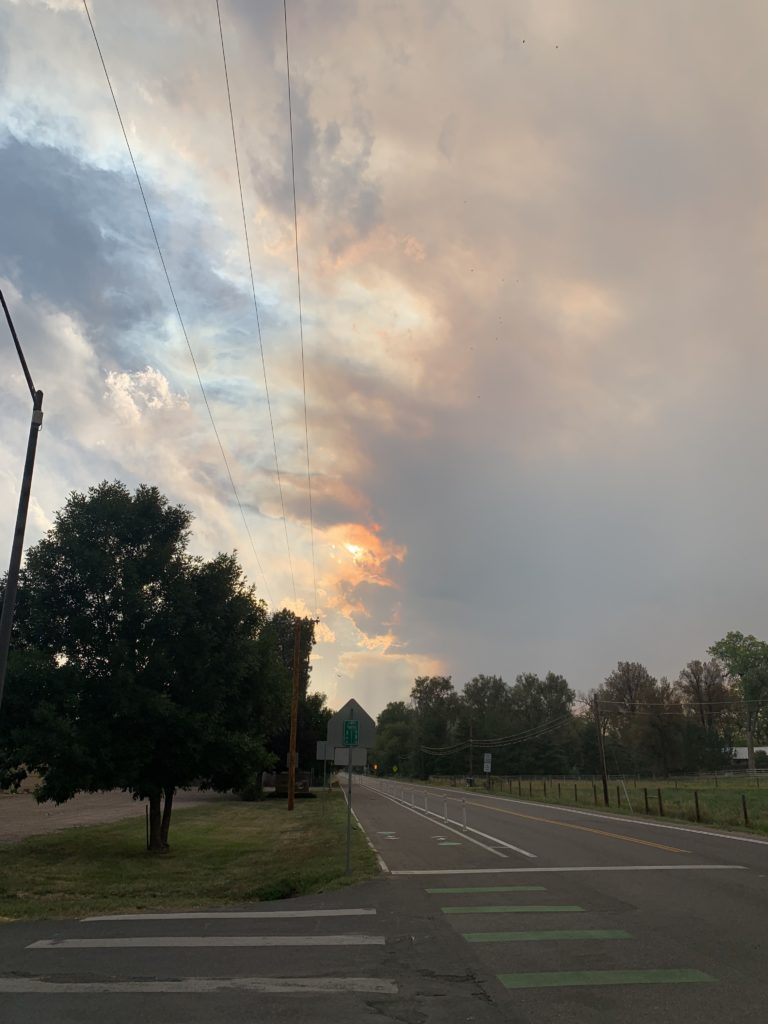Smoke & Training

Welcome to the tail end of the summer, or as we’ve come to know it as here in Seattle “Fire Season”.
As I sit down to write this, I’ve just finished reading a message from our local velodrome alerting the community that Friday night racing will be cancelled if the Air Quality Index in the area of the track exceeds 150. It looks like a near certainty that that’s going to happen. It’s sitting at 167 near the track now, and about the same in my neighborhood.
When the air is like this, you won’t find me training outdoors. If I train at all, it will be inside, on the trainer, with an air filter working hard a couple of feet from my face.
This is an easy call for me, though; with a history of exercise-induced asthma like symptoms, if I even attempt to ride in conditions of this sort, my body quickly lets me know that It’s just not going to happen.
As an athlete, my decision making process in this area is thus pretty darn simple. As a coach, though, when the bad air starts to roll in I find myself in the position of needing to advise clients on how they should approach training in these conditions, when they don’t have the (cough) advantage of the built in go/no go gauge that I do.
“First Do No Harm” is always the starting point for any ethical coaching practice, and it is manifestly the case here. While there is always some risk to physically demanding athletic pursuits such as cycling, the risk of exercise in unhealthy air conditions can be well outside the range of any reasonable calculus, and should be strongly discouraged.
I am a cycling coach, not a doctor, and as a result any advice I give must always avoid the temptation to encroach on areas that would constitute “medical advice”. As a result, I will always limit my advice in this area to “don’t ride in unhealthy air conditions”.
What constitutes “unhealthy air conditions”?
The US Environmental Protection Agency guidelines look like this…

You can find more detailed information on these guidelines here.
You can find real-time readings of your local air quality in several places, including:
Advanced forecasts of air quality can be found at:
When an athlete is confronted with bad air conditions, they should check the status of those air conditions at one of the sites listed above, look up those readings on the AQI concern graph (also above) and apply the results to their training program. If the chart says to stay inside, well… you should probably stay inside.
These are the official guidelines, and my advice to athletes is simply to follow them, with one important caveat: if you feel like air quality is negatively impacting your training regardless of what the official numbers are, honor that feeling. AQI numbers can vary tremendously across a small geographic area, and individual athlete’s responses to air quality can also vary. Just because the AQI numbers indicate that you should be OK to train, that isn’t necessarily true for you, in the precise location you are at.
Err on the side of caution, and when in doubt, call it a day.
If and when you do call it a day, let me – or whoever your coach is – know that you did so, and I/we can and will adjust your training calendar accordingly.
THAT is precisely what I’m here for as a coach.
 About the Author: As a coach and trainer, Matthew’s client list includes multiple National Champions, a World Champion, and many successful local racers, fondo and recreational riders, and entry-level enthusiasts. At the 2015 Cyclocross National Championships, ¾ of his clients placed in the top ten of their respective events, with two reaching the podium, including 3rd place in the Elite Men’s category for long-time client Zach McDonald. Athletes who first learned the basics of Cyclocross from him have gone on to win National Championships and international distinction, and to podium placings at the World Cup and World Championship level. Head coach for the Marymoor Velodrome Cyclocross practice sessions, Matthew has taught cyclocross fundamentals to thousands of cyclists over his more than a decade at the helm. Riders at all levels of the performance spectrum can and do call on Matthew for his skills instruction, including professional teams who have been known to send new recruits to him for skills assessment and old hands to him for refresher courses and refinement. Learn more about Matt.
About the Author: As a coach and trainer, Matthew’s client list includes multiple National Champions, a World Champion, and many successful local racers, fondo and recreational riders, and entry-level enthusiasts. At the 2015 Cyclocross National Championships, ¾ of his clients placed in the top ten of their respective events, with two reaching the podium, including 3rd place in the Elite Men’s category for long-time client Zach McDonald. Athletes who first learned the basics of Cyclocross from him have gone on to win National Championships and international distinction, and to podium placings at the World Cup and World Championship level. Head coach for the Marymoor Velodrome Cyclocross practice sessions, Matthew has taught cyclocross fundamentals to thousands of cyclists over his more than a decade at the helm. Riders at all levels of the performance spectrum can and do call on Matthew for his skills instruction, including professional teams who have been known to send new recruits to him for skills assessment and old hands to him for refresher courses and refinement. Learn more about Matt.
